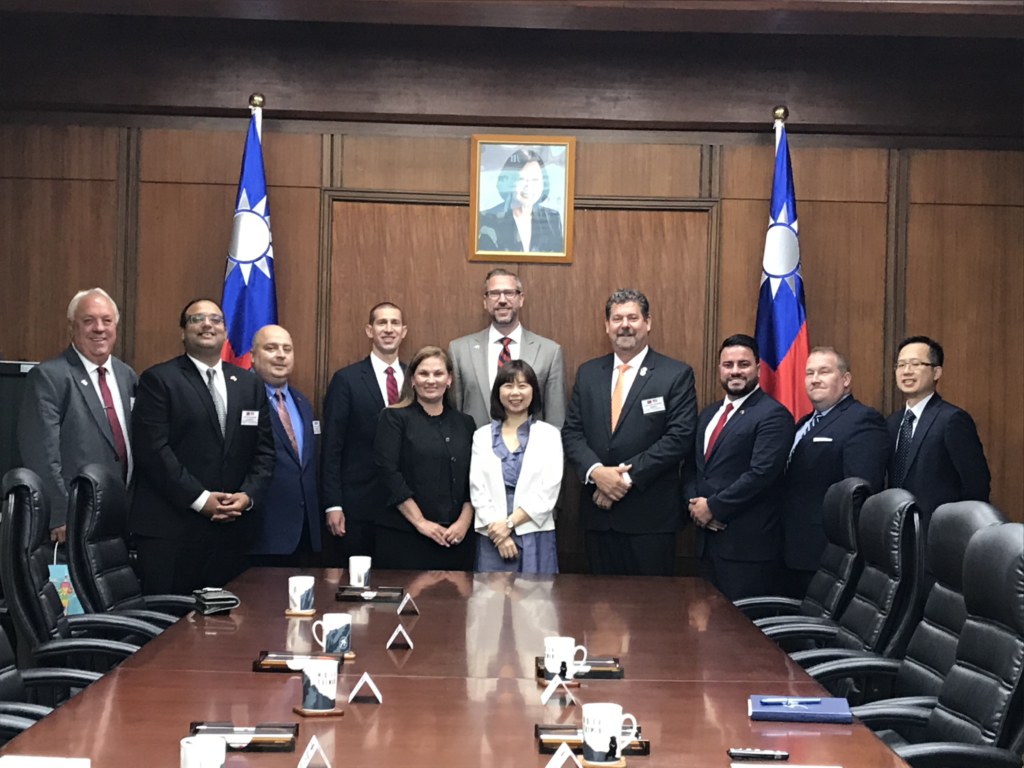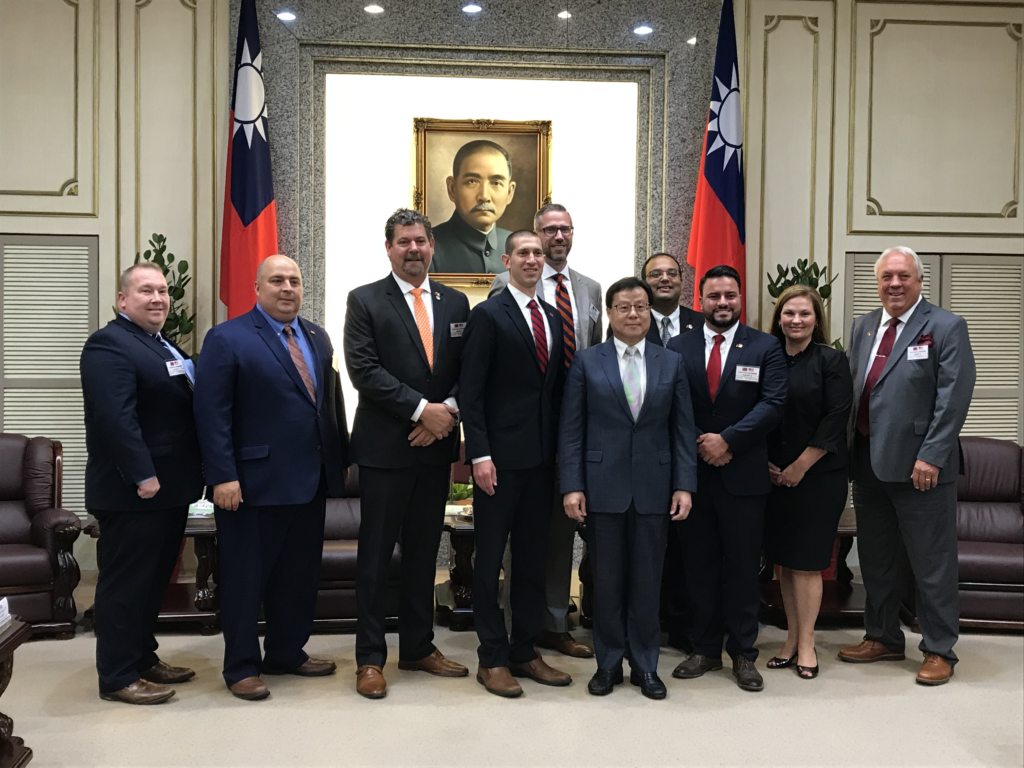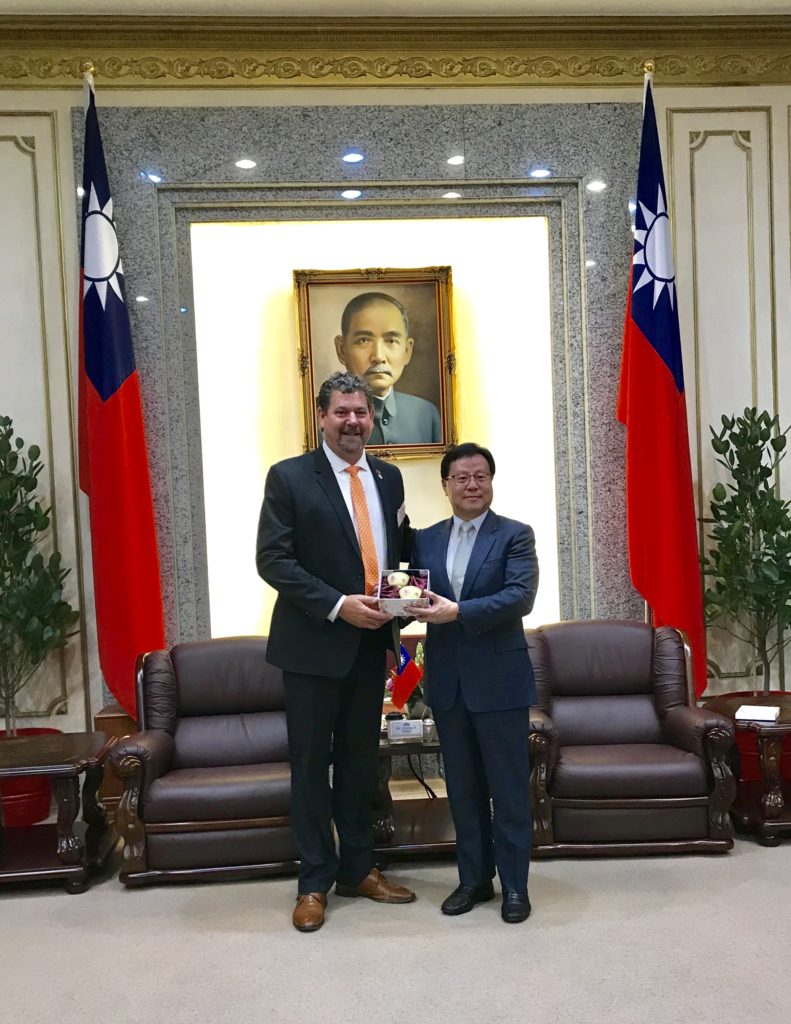Expanding Minnesota’s trade relationship with Taiwan
Recently I had the opportunity to participate in a bipartisan delegation of midwest legislators and leaders to Taiwan, where we met with Taiwan leaders and think about how our relationship with the state can be even more successful.
Just to be clear, the trip was funded by Taiwan’s Ministry of Foreign Affairs, not by Minnesota taxpayers.
Taiwan is also known as the Republic of China (not to be confused with the People’s Republic of China, or ‘mainland’ China). It is a small island about 100 miles southeast of mainland China.
Taiwan has governed itself independently since 1949, but China still views it as a province. This is the source of quite a bit of tension. In fact, China will not have a diplomatic relationship with any nation that officially recognizes Taiwan. This is why the United States considers our relationship with Taiwan unofficial, even though they are among our best trade partners in the region.
Last year, Minnesota sent more than $400 million worth of goods to Taiwan, and Taiwan signed a massive $1.5 billion deal to by almost 4 million metric tons of Soybeans from Minnesota and Iowa in the next few years.
According to the Trade Representative, the United States exchanged about $94.5 billion worth of goods and services with Taiwan last year. This relationship supports more than 200,000 jobs.
Taiwan also regularly organizes agricultural buying missions to the US. Minnesota was included in those purchases in 2013, 2015, and 2018, to the tune of more than $7 billion. The size of these purchase has been trending downward in recent years. One important reason I went on this trip was to encourage more Taiwanese investment in Minnesota.
Here is our full itinerary of meetings and tours we took part in during the trip:
July 21: Arrival, tour of Longshan Temple and tour of the National Palace Museum.
July 22: Tour of Taipei Rapid Transit Corporation; Briefing at the American Institute in Taiwan; met with the American State Offices Association; tour of the National Chiang Kai-Shek Memorial Hall; tour of the National Cultural and Creative Gift Center.
July 23: Met with the American Chamber of Commerce; met with deputy minister of the Ministry of Health and Welfare; met with the Ministry of Transportation Railway Bureau; tour of Taipei 101 Financial Center.
July 24: Meeting at Legislative Yuan; met director general of the Department of North American Affairs for the Ministry of Foreign Affairs; met with deputy minister for the Mainland Affairs Council; met with the Ministry of Economic Affairs’ Industrial Development Bureau;
July 25: Tour of the Council of Agriculture’s Taoyuan District Agricultural Research Extension Station; met with Taiwan Semiconductor Manufacturing Company Limited; High Speed Rail to Kaohsiung.
July 26: Tour of Kaohsiung Port; tour of Kaoshiung Port warehouse 2; train back to Taipei; Shilin Night Market.
As you know, I consider strong relationships to be the most important aspect of our success as a community, state, and nation. Not only did I have a chance to build some great relationships with Taiwanese leaders, but I also got to know a legislator from Wisconsin quite well. Assemblyman John Plumer represents Wisconsin Assembly District 42, which is just north of Madison. We have already been in contact multiple times, and I look forward to exchanging ideas with him and working on issues that will benefit not just our home districts, but the entire region.
The United States and Minnesota have long had a successful economic partnership with Taiwan. But as technologies change and evolve, so do consumer demands. Those changes present new opportunities for mutual success, but they will pass us by if we lose focus. That’s why trade missions like this one are so important – so we can take full advantage of the opportunities before us.



